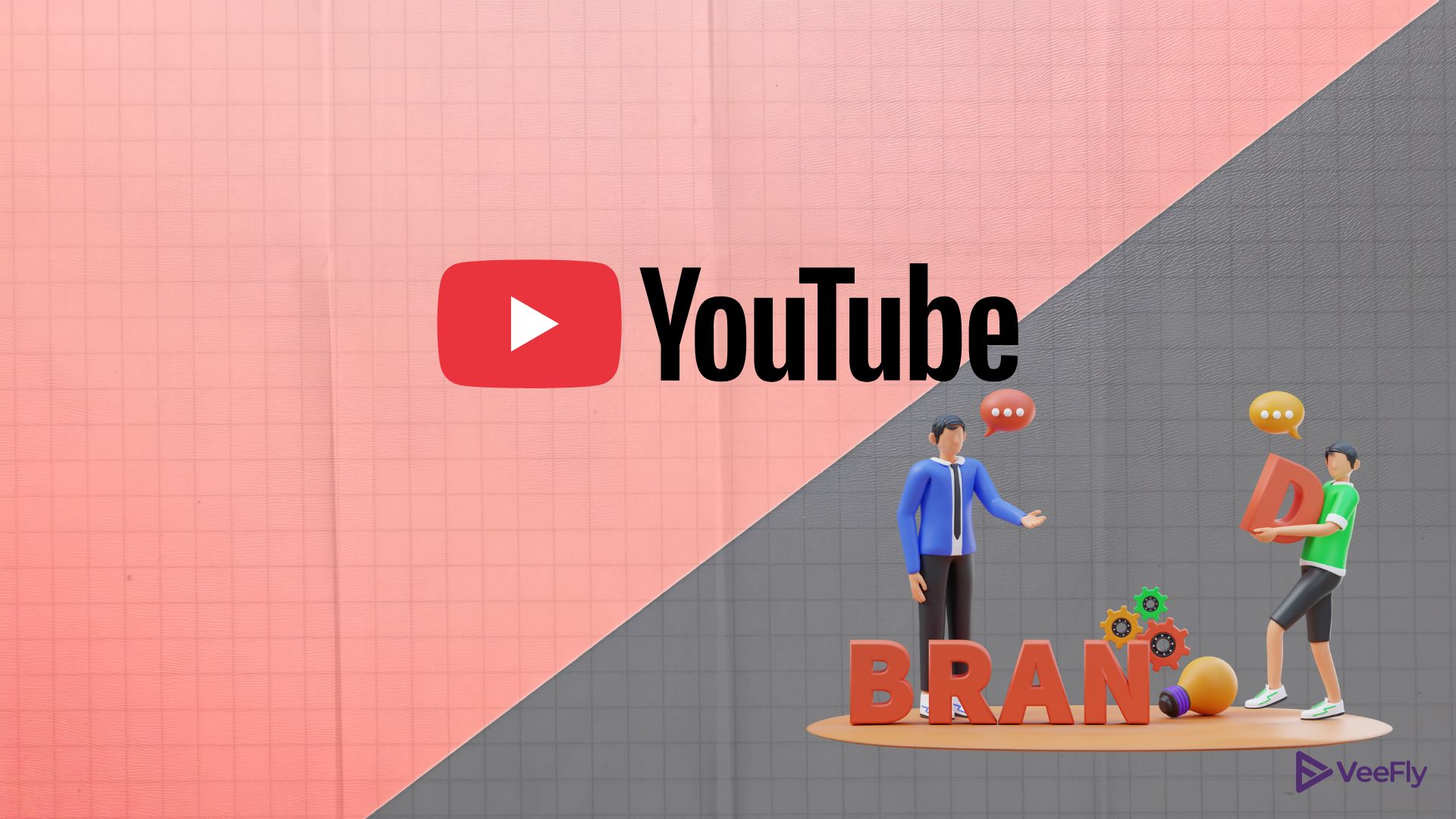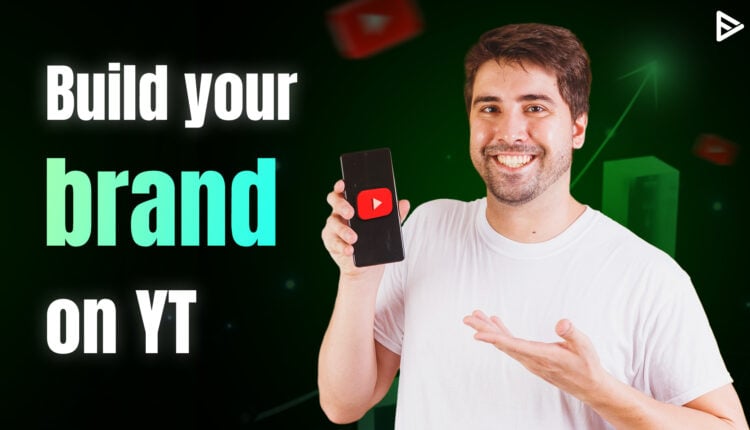YouTube is just not a social media platform. It is where viewers want to consume real content, long-form videos. Whether it’s during their morning commute or on the way to college, audiences spend time on YouTube for long-form, story-driven content. That’s what makes branding for YouTube completely different from simply creating a personal creator channel. For brands, YouTube is a powerful platform for connecting with audiences through authentic storytelling.
You can share how your brand originated, the inspiration behind its name, or the values that drive your journey. These stories humanize your business and help viewers relate to it on a personal level. Over time, this approach strengthens awareness, builds trust, and drives meaningful engagement, turning YouTube into a genuine engine for business growth. When done right, YouTube for brands can be one of the most effective ways to increase reach, foster loyalty, and ultimately, boost revenue. Let us see how.
Building a Brand on YouTube must have a Purpose.
It is essential to set the groundwork right. YouTube for brands must start with a purpose. It is necessary to define the purpose of launching the brand’s YouTube channel.

- Define the role of the brand: Determine whether the branding channel will serve as an education, awareness, or lead generation channel. Just by defining the purpose, it will be easier to create a YouTube strategy for brands.
- Create a brand voice: For viewers to recognize you easily, maintain visual consistency. To build familiarity, keep a short brand intro (3–5 seconds) and a signature introduction and sign-off.
- Content Pillars: Once you define the role, choosing 3-5 content pillars will help your channel act as a growth engine. Select pillars that align with the audience’s intent. How-tos, behind-the-scenes content, new product releases, customer stories, and brand journeys will provide variety and add strategy. This will help you optimize your channel for generating leads and driving revenue.
- Strategize a content plan: Branding for YouTube requires a plan. Create a business plan that you can commit to and stick to. For many brands, posting one to two long-form videos and YouTube Shorts per week is a good starting point. And because YouTube isn’t like Instagram or TikTok, where content disappears quickly, consistent publishing helps your channel build authority, views, and compounding growth over time.
YouTube Strategy for Brands: Smart Ways to Grow
Once the initial groundwork is in place. It is now time to strategize smartly to grow on YouTube.
Optimize for Discovery
Write titles that are optimized for search discovery and match audience intent. Use the first 125 characters of the description to answer “what’s in this video,” and include 3-5 relevant keywords and a clear CTA. Add chapter timestamps for longer videos to improve watchability. Remember: unlike Google search, YouTube’s algorithm gives heavy weight to how viewers behave after clicking, so your title and thumbnail must entice and deliver.
Amplify Reach
Engage with viewers to improve discovery and land in the recommended and suggested video lists of other viewers. Repurpose long-form clips into 15–60 second Shorts to highlight key points and attract viewers who prefer shorter content. Utilize community posts and pinned comments to engage viewers, ask questions, and foster a sense of connection that extends beyond the video.
Track YouTube Analytics
Beyond views and subscribers, track the right KPIs for the channel. Analyze and measure the following activities: watch time, average view duration, click-through rates, and conversion rate. Conducting a comprehensive audit of your channel will help you identify content gaps, understand your audience, and optimize your strategy.
Why is Marketing YouTube Videos Crucial for Brands?
Branding for YouTube, when supported by the right tactics for growth, builds trust and brand authority. Let us briefly explain the other reasons why is marketing YouTube videos crucial for brands.
- Increases Conversions: Promoting videos that guide viewers through the steps to take action, such as signing up or using product links as CTAs. When marketed effectively, YouTube can become a lead-generating channel.
- Audience engagement: Consistently marketing valuable video content positions your brand as a thought leader. People start trusting your expertise and return for valuable insights.
- Boost visibility & Brand Authority: Building a brand on YouTube by consistently promoting videos across all social media platforms, through blogs, social media posts, newsletters, etc., helps you expand beyond YouTube. It helps other views across different platforms to discover your brand.
YouTube Best Practices for Brands
Here are some valuable YouTube best practices for brands:
Thumbnails and the First 10 Seconds are Everything
Make thumbnails clear and readable at mobile size. Use the first 10 seconds to hook (problem statement + promise). If you don’t hook them early, YouTube’s algorithm will deprioritize the video. Engaging early footage and a clear value proposition are vital.
Test & Iterate
Run A/B testing for titles and thumbnails; it’s now easier than ever, thanks to YouTube’s exciting new updates to YouTube Studio. Leverage the latest features and experiment with new formats and video ideas, and research competitors to replicate their formats on your channels. It is essential to document your learnings and treat your YouTube channel as a long-term asset.
Conclusion
If you want to scale a YouTube brand channel, then invest in it and treat it as a strategic channel. Branding for YouTube must be authentic, unique, creative, and consistent. A YouTube strategy for brands must include three aspects: educating, inspiring, and building trust over time. This strategy will turn casual viewers into loyal customers, helping you create a stronger brand to grow your business.
Frequently Asked Questions
Q1. How to build your brand on YouTube?
Create consistent, high-quality videos that tell your story and offer value. Use strong visuals, a recognizable tone, and regular posting to build trust and recognition over time.
Q2. How does the YouTube business model work?
YouTube earns revenue through ads, channel memberships, SuperChats, partnerships, etc. YouTube keeps 45% revenue generated from ads, while creators receive 55%. On the other hand, creators receive 70% of revenue from Super chats and channel memberships.
Q3. What is the 30-second rule on YouTube?
The 30-second rule on YouTube is to quickly grab the audience’s attention. Getting their attention in the initial few seconds means they are likely to watch the rest of the video, which will improve your video’s engagement and performance.
Q4. What type of YouTube content is most effective for businesses?
Summary
- YouTube is distinct from other social media platforms, focusing on long-form, story-driven content that fosters authentic storytelling for brands.
- Defining a clear purpose and content pillars for a brand's YouTube channel is crucial for creating an effective strategy and optimizing for audience engagement.
- Engagement strategies such as optimizing video titles for search, using community posts, and repurposing content into Shorts can enhance visibility and audience connection.
- Tracking YouTube Analytics beyond surface metrics like views and subscribers helps brands identify content gaps and refine their strategies for better performance.
- Consistency in branding, quality content, and effective marketing across platforms are essential for building trust, authority, and ultimately driving revenue through YouTube.


